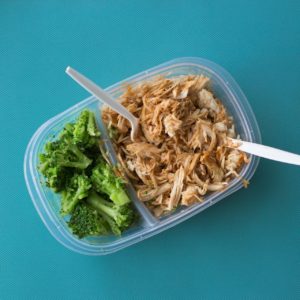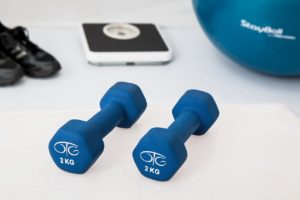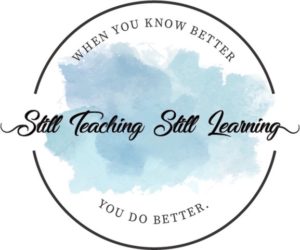
I have been an intermittent faster for over a year. I’m sharing my story about how and why I got started with this healthy eating and wellness lifestyle in the hopes that it will help you as well.
First, a disclaimer. Do your homework — read about it first. I’m not a doctor and I am not offering medical advice. Intermittent fasting may not be the best approach for your particular needs. I am only sharing how I got started and how it works for me.



ONCE UPON A TIME . . .
I once heard a quote from Dr. Jerome Harste, a professor of education at Indiana University who said, “You must always assume that one of the pillars of your thinking is dead wrong.” While he was speaking about education in an entirely different context, that quote has stuck with me for many years.
When it comes to my eating habits, that quote comes to mind again. Let me explain.
When I was in middle school and high school, I did not like to eat breakfast until 10 or 11 a.m. My family typically ate dinner around 6 p.m., so I was “fasting” for about 16 – 17 hours per day.
That period of time in my life was when I felt the best, had the most energy, and maintained a healthy weight without much effort. (Okay, I was also a lot younger then, but I still remember how good I felt at that time!)



For years (like about 40 of them), I believed the popular nutritional idea that you need to eat 5-6 small meals per day to keep your metabolism high. I, like many people, fell for that idea since it seemed to make sense and also had some science behind it (or so I thought).
However, in addition to spending an obscene amount of time “prepping” all of these meals and snacks, I was losing energy and started slowly gaining weight. So I did what most people do — I cut calories and carbs even more, which did nothing to change things.
It should have occurred to me that this eating approach was not healthy for ME, based on the fact that I had low energy, was slowly gaining weight, and was obsessing about food. Then my thyroid levels dropped, which only made everything worse.
Every time I would mention my eating plan issues to friends, they would parrot the same advice that I was following, but I didn’t connect the dots to notice that these friends all struggled with maintaining their weight as well.



TIME FOR A CHANGE
Clearly, something needed to change. I refused to accept that I was getting older, everything was slowing down, blah blah blah. There had to be a better way. I started seeing a naturopathic doctor who helped me increase the fats in my diet and reduce the amount of gluten and processed foods I was eating.
I also started doing my own research. I heard about Amanda Tress and her “Faster Way to Fat Loss” program on someone’s blog. I was interested in learning more, so I went to her site and noticed this article.
At first, I thought, “Fasting? I could never do that. That would be too hard. It would shut my metabolism down. I would obsess about food. I would probably gain weight because I would be so hungry at the end of my fast, etc., etc.”
But — after reading her article, and remembering the time in my life when I actually was intermittently fasting — I realized that this approach might work for me. At least it was worth a try. (By the way, Amanda has an amazing eating plan and workout program. Check it out here!)


HOW I STARTED & THE RESULTS I GOT
So I started. At first, I only fasted for about 14 hours a day, noting the time when I “closed my eating window”, i.e., stopped eating at night, then “opened my eating window” 14 hours later.
Much of the fasting actually happened overnight. When I got used to that and was feeling great, I then slowly increased my fasting time. Now I regularly fast for 16-18 hours daily.
During my fast, I drink only water and black coffee. I learned about the importance of a “clean fast” from Gin Stephens’ blog post.



Guess what happened? I effortlessly lost 10 lbs (which was my goal), my thyroid hormones balanced themselves, and I have tons more energy. Even my hair and skin look better and healthier, which I attribute to autophagy (see below).
Best of all — I save tons of time by not preparing all those “mini-meals” and snacks for my teaching day. I basically take a snack to school and then eat dinner later at home.



Eating small meals all day long was one of those “pillars of thinking” that was dead wrong. At least for me.
Now I notice other people with their containers of food and how they eat every few hours. I also notice that every single one of them has weight issues of some type (either truly overweight or just highly conscious of weight).
I realize this approach may not be right for everyone, but I encourage you to look into it and see if it might be a good fit for you.



RESOURCES
My favorite resources for learning more:
*Delay, Don’t Deny by Gin Stephens
*AC: The Power of Appetite Correction by Bert Herring
*The Obesity Code by Dr. Jason Fung
Updated in 2022 to add the following:
*Fast, Feast, Repeat by Gin Stephens
*Intermittent Fasting Transformation by Cynthia Thurlow
*Podcasts: I highly recommend Intermittent Fasting Podcast – with Melanie Avalon and Gin Stephens. I found this podcast when Gin and Melanie were on their second episode and I have been listening ever since. They give tons of information and helpful tips. They also discuss intermittent fasting research and explain it in a user-friendly way.
On their website, they include links to various studies in their show notes for each podcast.
Gin has also started a new podcast called Intermittent Fasting Stories.



OTHER TIPS
Within your eating window, make every effort to eat 8 – 10 fruit/vegetable servings. I know it sounds like a lot, but with each serving being only ½ cup, it’s not as hard as it sounds.



Exercise. In some way. Every day. I am a fan of brisk walking, using cardio machines, yoga, Pilates, and weight training.
Great workouts I recommend: Faster Way to Fat Loss workouts, Physique 57, and Chalene Johnson’s PiYo.
I started using exercise videos way back in 1986 and became a huge fan of the FIRM videos. There have been lots of changes in that company over the years, but the original FIRM workouts, designed by Anna & Cynthia Benson, remain favorites of mine.
(Try to ignore the hairstyles, etc. It was the 80’s. Everything was big and puffy. Except the people in the videos!)



SOME BENEFITS OF INTERMITTENT FASTING:
*balanced hormones, which helps make your stored body fat more accessible for fat burning
*lower insulin levels & higher human growth hormone levels, which leads to fat burning and muscle toning
*cellular repair & removal of waste material from cells. This is called autophagy, which protects against disease.
*reduced inflammation in the body, which slows the aging process and helps prevent disease
*improves heart health factors such as blood pressure and cholesterol levels
*may help to protect against neurodegenerative diseases, like Alzheimer’s disease and Parkinson’s disease.
Read more about intermittent fasting in this article.
For more tips about intermittent fasting, check out my board on Pinterest.
If you try intermittent fasting, I would love to hear your story! Email me or comment below!
